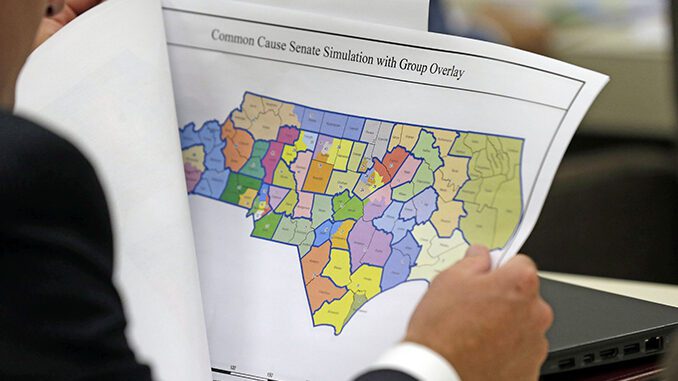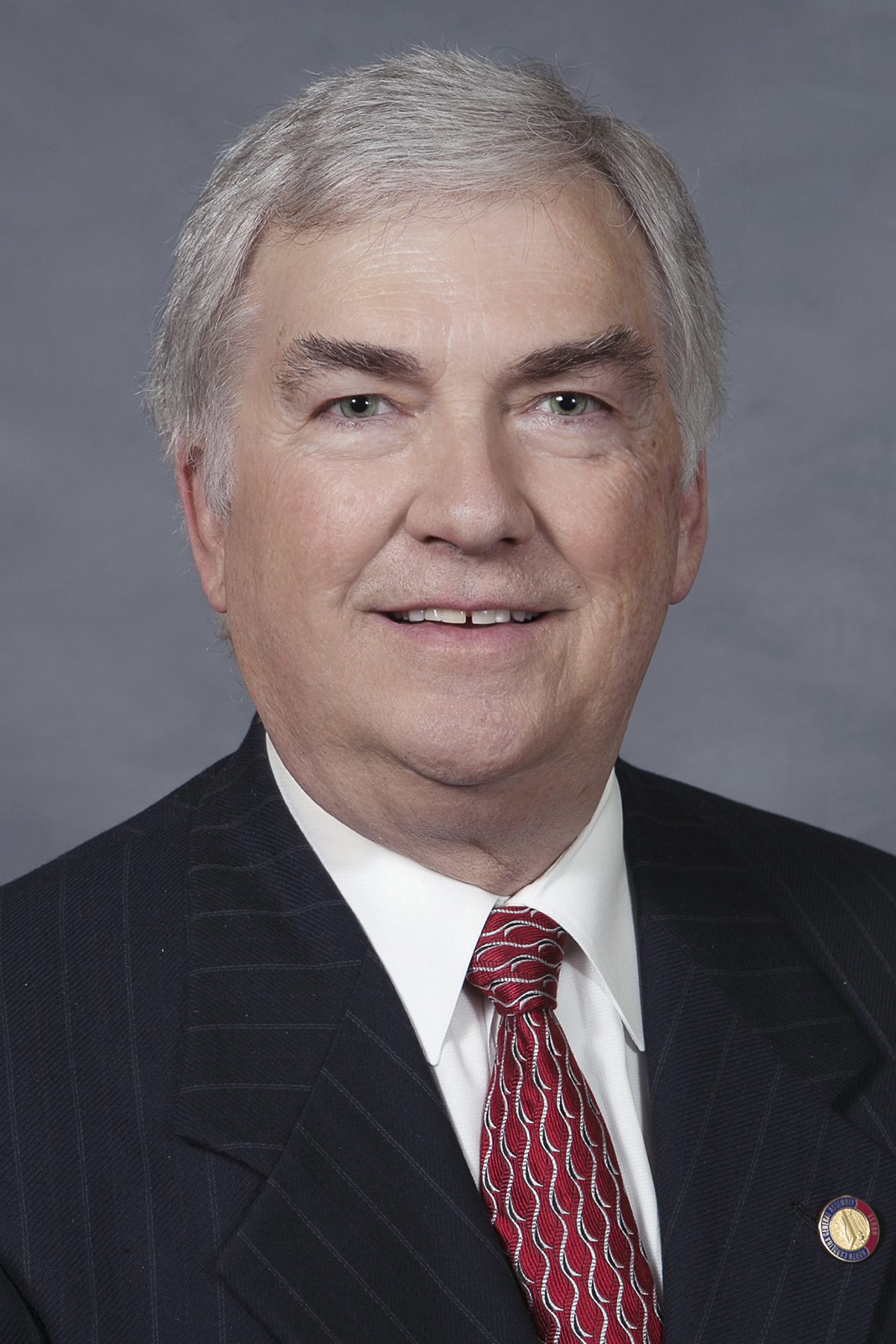
RALEIGH — A proposal that would elect North Carolina’s 50 state senators from contiguous two-county districts will be finding its way into legislative discussion this session, according to Rep. Jay Adams (R-Catawba).

The proposal, which is still in the drafting process, would be in the form of a constitutional amendment that voters would have to approve.
In an interview with North State Journal, Adams said the Senate districts would “mimic the federal Senate arrangement” where there are two senators for every state and then the representation in the House is by population. He later added, “Wyoming has a population of less than 600,000 but got two senators.”
Adams said he has not analyzed the pairings nor has he created a map that that pairs the counties.
“My thinking would be that we would start from the east and the west and pair counties, and then as we got to the center, we would have a little bit more of a challenge,” said Adams. “I think in the final analysis, the arguments would be what county is going to be associated with Mecklenburg and what county is going to be associated with Wake. I don’t think of these adjacent counties are going to willingly attach themselves, but we’ll see.”
Adams acknowledged this proposal will have significant hurdles, specifically, running afoul of a past U.S. Supreme Court ruling.
“My background is not political science. I’m just a politician,” said Adams. “But the point is I started thinking about ‘Well, why don’t we do that?’ And so I mentioned it to Rep. (Harry) Warren, chairman of the elections committee, and he said, ‘Well, that violates the one-man, one-vote principle.’”
The one-man, one-vote principle refers to a 1964 Supreme Court ruling under then-Chief Justice Earl Warren that said all state legislative races should be based on population.
While Adams finds the idea of challenging a Supreme Court ruling “daunting,” he pointed to a scholarly report examining the issue published by the University of the Pacific Law Review titled “Little Federal Model: One County, One Vote.”
“It was written a year ago and it talks about the rural/urban divide and the tensions that exist between the rural areas and the urban areas, which I think is probably most pronounced right now by what’s going on in Oregon,” Adams said. “You got 63% of the state land area that’s trying to secede and attach itself to Idaho, and, interestingly, that 63% of the land area only represents 9% of their population. So, there’s growing tensions in this area.”
Adams went on to list major cities that essentially run the states they are located in, such as Chicago and Denver, as well as the control certain counties have over a state like Maricopa County in Arizona.
The Catawba lawmaker said as he began to think about the topic, he thinks “it’s evolved to this point” in North Carolina and that the state does have an urban/rural divide.
“One senator represents 10 counties,” Adams said. “And I asked Sen. (Bobby) Hanig what that’s like, and he said, “Well, go and try to put up yard signs in 10 counties and see how you feel about it?” And then, Sen. (Kevin) Corbin in western North Carolina represents eight counties. Meanwhile, Mecklenburg has got five senators that can walk around their districts.
“So the further I thought about this, is it not a legitimate thing to think that each county government, all the municipalities in that county, the school boards, and everything — shouldn’t they get equivalent representation in the Senate? Is that an unreasonable thought?”
Adams also mentioned a past U.S. senator had tried to change the Warren Court’s ruling.
“If you go back and look at history, Sen. Everett Dirksen — who was minority leader in the Senate at the time, a senator from Illinois — he argued very strongly that this would be the result. That you would vest all the political power in the urban areas,” said Adams. “And he — for three times — he tried to run a constitutional amendment to neutralize the [Supreme] Court’s ruling and he died during his third effort. He was right.”
Adams concedes the plan isn’t right for every state.
“It’s not a solution for everybody, but for North Carolina it could be a solution,” he said.
He also said there was “no question” such a proposal would be challenged in the courts but called the proposal a “common-sense bill.”
“We know that, but I’ve talked to a number of senators about this, and they see that if you put five senators in one county and four in another county, then what you remain with in the rural areas is huge senatorial districts that are difficult to represent,” Adams said.
Since the proposal is in the beginning stages, Adams said he has not yet spoken with any members of the Senate’s elections committees nor with Senate Leader Phil Berger (R-Eden). He said that he has several lawmakers who have indicated they wish to be a primary sponsor, including Reps. Keith Kidwell (R-Beaufort) and Karl Gillespie (R-Macon). He also said that Rep. Carson Smith (R-Pender) has “absolutely insisted” to be a primary sponsor.
Adams said that it’s very difficult for senators with five or eight counties under their jurisdiction to engage the population that they represent because it’s so dispersed.
Such a bill would likely see challenges from the likes of Marc Elias, the go-to attorney for Democrats on election law and redistricting who has sued North Carolina on multiple occasions.
“Mark Elias? I’m not here for Mark, and Eric Holder — the team,” said Adams. “What I’m trying to do is offer an example of how we can mitigate the rural/urban divided not just in North Carolina.”
Adams also responded to questions about the rural focus of the new 25-year-old leader of the N.C. Democratic Party, Anderson Clayton.
“She’d have a whole lot more races,” Adams said. “If she wants to go for the rural areas, then she would all of a sudden have many more Senate races in the rural areas. All of a sudden, you’d have five Senate races in eastern North Carolina that you don’t have now and four Senate races in western North Carolina you don’t have now.”
Adams mused about how rural county residents would react to the fact that they now have a senator that represents their county governments if voters pass the measure.
“I wonder if it would engage them more in the political process,” said Adams, later adding that he thinks that regardless of what the outcome is, the discussion is going to be useful.
Agriculture, fisheries, forestry and tourism dollars being the main drivers of the state’s economy are concerns of rural counties, and Adams agreed his measure would be advantageous in those regions in terms of more equitable representation.
Conversely, the five-term lawmaker also said he didn’t think his proposal would change the dynamic that Wake and Mecklenburg typically get about 80% of the funding for education, transportation and economic development.
“I don’t think that’s going to change because they have the greatest needs in those areas,” said Adams. “But if we have a Senate that’s populated with senators in the far east and far western part of the state and they vote on those things, they should get something in return for that vote.”
He went on to say there the logic for making those investments in the larger population centers can’t be denied, but “you spread the voting power more equitably across the state” with his proposal.




